

Ambrosius Bosschaert the Elder(1573-1621),Still-Life of Flowers(1614)
These floral art all have the characteristics of still-life paintings. Not only are they strong in color, they also have obvious changes in light and shade, and they are decorated with insects, birds, and fruits and other still life at the foot of the vase.

Blue Flower Vase

Glass Flower Vase

Flower Container
In the golden age of trade in the Netherlands, the famous painter Jan van Eyck (1390-1441) of the early Dutch school made oil painting officially on the stage of history, which made the ultra-realistic oil painting a reality.
Still-life painting is a kind of painting art that depicts inanimate life. Common natural depictions include food, flowers, dead animals, plants, stones, shells, etc.; artifacts include cups, books, vases, and jewelry , Coins, pipes, etc.
The middle of the 15th century to the middle of the 16th century was the golden age of the Netherlands. During this time, Dutch painting followed the Baroque art tendency dominated by other parts of Europe, creating the pinnacle of still-life, landscape and genre painting.
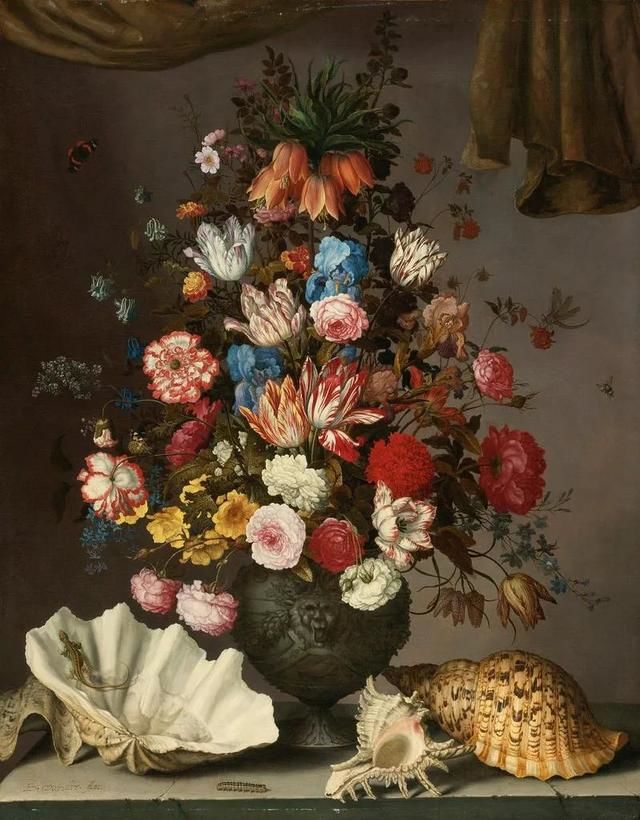
Balthasar van der Ast(1593-1657), Still Life with Flowers, Shells and Insects

Antique Style Flower Vase
Balthasar van der Ast(1593-1657),Flowers in a Vase with Shells and Insects(1628 )
Since the tulip was introduced to the Netherlands from Turkey in the late 16th century, botanists, connoisseurs, artists and intellectuals have enthusiastically collected and studied it.
Tulips quickly became a coveted luxury item, occupying a mainstream position in flower paintings from the 16th to 17th centuries. Since then, tulips have become a characteristic product of Dutch painting
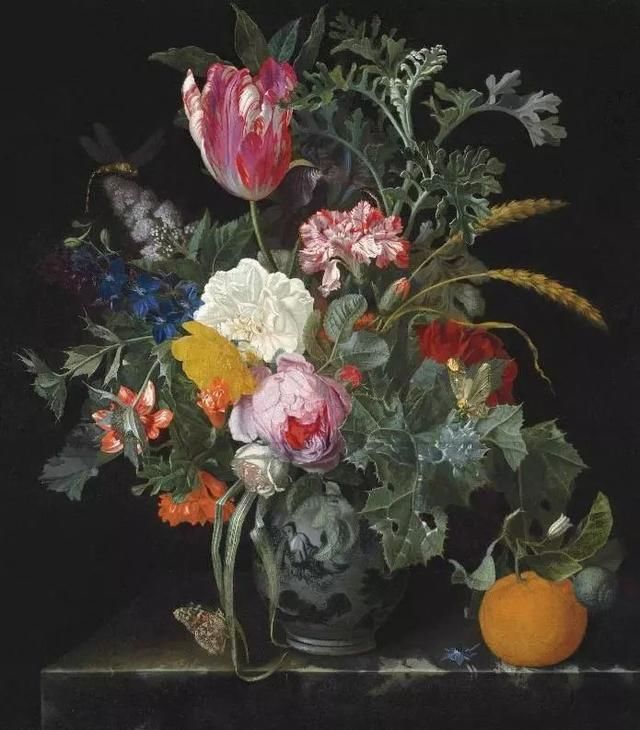
Flower Vase
Maria Van Oosterwijck(1630-1693), Flower Arrangement in a Vase with Figures on it and an Orange

Flower Vase
Maria Van Oosterwijck(1630-1693), Bouquet of Flowers in a Vase
In the 17th century, still-life painting came to the fore and has maintained an important position in the painting world ever since. Later, as the romantic Rococo period gradually entered, the flowers became more gentle, so the work has the characteristics of large size, light color, and magnificent flower volume.

Flower Vase
Jan van Huysum(about 1720-21),Glass Vase with Flowers with a Poppy and a Finch Nest
So how to achieve a still-life style floral work?
First of all, we must not deny the apply of "dark background".
The dramatic effect is extremely strong from the contrast of the dull background and vivid colors and highlights. The deep background and the lighting at the focal point, like an opera stage, creating a retro feel.
Fig purple, berry red, bright pink and lemon yellow are all suitable colors to fit in the tone.

Flower Vase

Flower Vase
Still-life painting has a great influence on the popularity of this style.
If you look for inspiration from Dutch still-life paintings, you will find that in the shadows at the junction of light and shadow, the bright colors of fruits always flicker, bringing more vitality and fragrance to the picture, and bringing a balance to the dull tone.

Flower Vase


One of the characteristics of still-life flowers is that they are luxuriant and rich. In this style, the flower containers are ususally atmospheric wide-mouth vessels.
There is no need to be constrained to the vase, and try to extend the flower material beyond the flower vessel, or droop or extend, forming a feeling of embracing the flower vase. An exaggerated work is more suitable for the aesthetics of oil painting style.
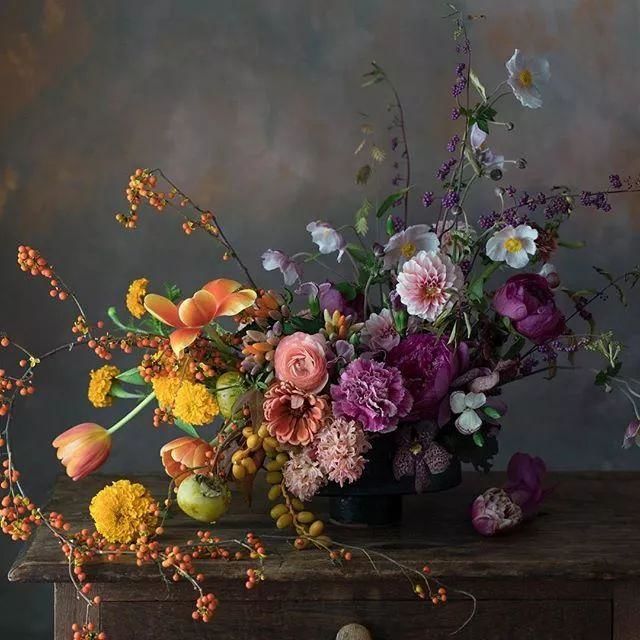


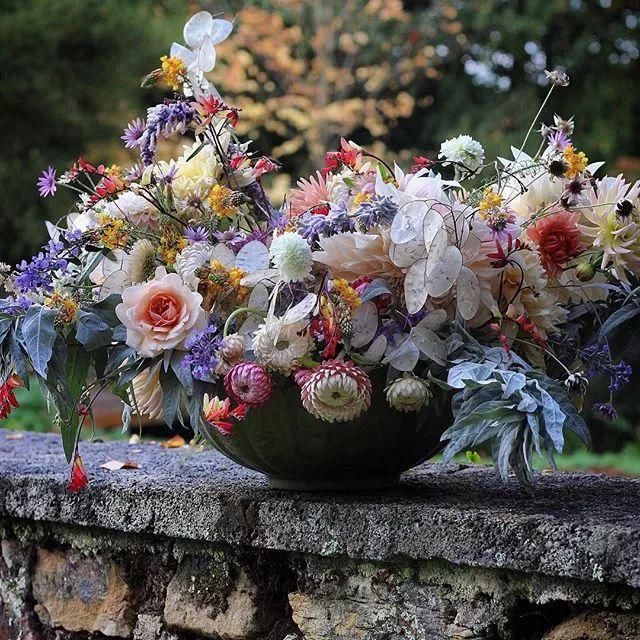
Flower Pot
The smartest trend is to improve on the basis of the original trend.
Although still-life oil painting has many fans, as the flowers are becoming more and more abundant, modern people have finally incorporated into our aesthetics, such as softer and brighter flower colors, and more elegant types of flowers.


Now we are going to step by step to make a Renaissance autumn and winter color oil painting style floral works
First, pick the right flowers and leaves. Details as below
Material: Carnation | Blue Potted Flower | Ranunculus Plant Coleus | Eucalyptus Leaf | Yellow Rose | Multi-head Rose | Caramel Garden Rose | Milkweed | Cinnamon Basil | Snapdragon | Mugwort | Saxifraga

Flower Vase
Fix the floral foam in the glass vases.
Start from large leaf materials, the structure is built like a mountain shape.

Gently blow the rose petals apart, and use your fingers to gently help it bloom.

Add the main roses and matching flowers.


As mentioned before, the leaves on the edge must hang down to cover the flower container.


After the final adjustment, put a few piece of fruit in front of a dark background, and put light on the focus, and you can have a pot of oil painting style works!

Flower Vase

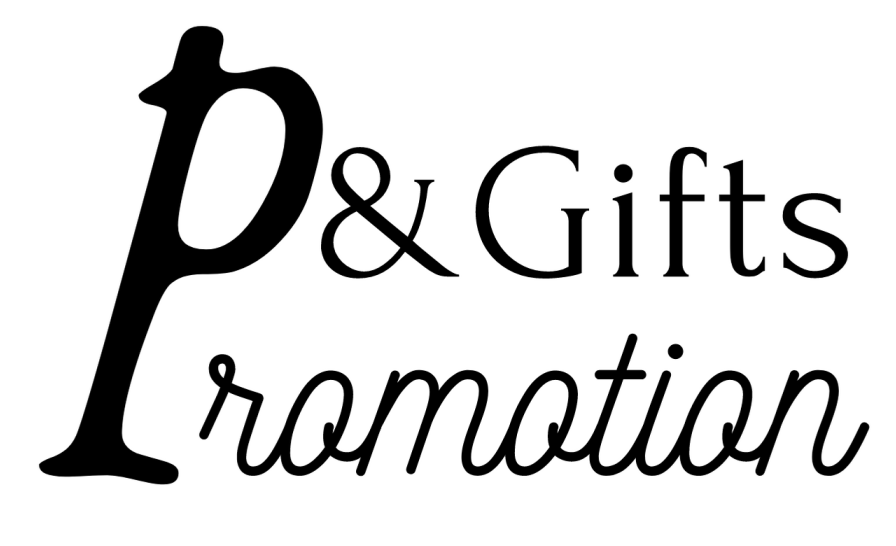
 English
English German
German French
French Arabic
Arabic Afrikaans
Afrikaans Albanian
Albanian Armenian
Armenian Azerbaijani
Azerbaijani Basque
Basque Belarusian
Belarusian Bulgarian
Bulgarian Catalan
Catalan Croatian
Croatian Czech
Czech Danish
Danish Dutch
Dutch Estonian
Estonian Filipino
Filipino Finnish
Finnish Galician
Galician Georgian
Georgian Greek
Greek Haitian Creole
Haitian Creole